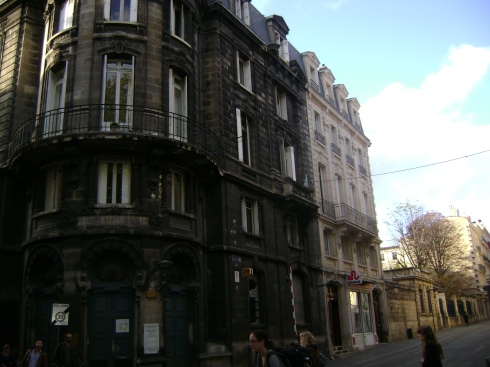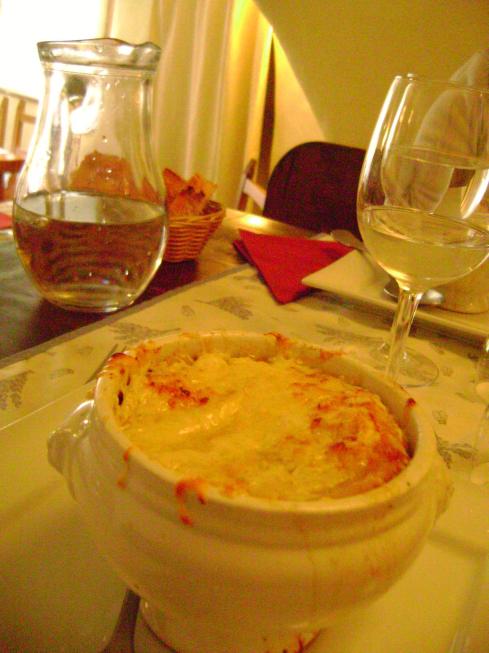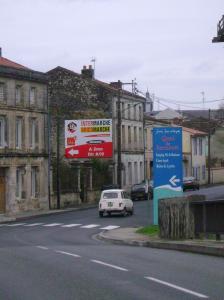“C’est normale.” It’s normal. “C’est comme ça.” It’s just like that. Expressions that fall often on the ears in France, usually at the times when I least want to hear them. It’s normal, apparently, to wait two months for one’s carte vitale, which gives one the ability to take advantage of France’s renowned dirt-cheap health care — and it’s not cheap by the way, it’s called social security and twenty percent of my paycheck. No one thought to give warning that without that magic carte vitale and its accompanying social security number, medical care in France is just as expensive, if not more so, than in the United States.
I find no redeeming value in this experience except for the opportunity to return obnoxious, stubborn behavior with the same. Or, to put a more positive spin on it, the opportunity to practice persistence. Bureaucracy and paper trails are as natural as breathing for the French; that doesn’t mean they have it any easier, but rather than growing frustrated after only five phone calls and six weeks of waiting, they have wisdom enough to simply mumble, “C’est normale. C’est tout.” And they persist. At least I am able to provide comic relief for my colleagues with my stories of trying to manage very mundane processes in their country: finally coaxing the bank to send me my debit card and checkbook; prying my lost cell phone from the grip of a very irate train conductor; getting rightfully reimbursed for any number of bureaucratic expenditures.
You wonder why the French have a reputation for being stubborn, argumentative nit-pickers? Frankly, they have to be this way, just to survive their own country. A true accomplishment, I should think, to reach a ripe old age in France with one’s sanity and humanity still intact.
Speaking of sanity, here are the words in French I was wishing I knew today at work:
étincellement — glitter
pot à colle— glue pot
papier de bricolage — construction paper
flocon de neige — snowflake
It was ‘creative Christmas’ day at the high school — making Christmas cards with the assistant’s very limited craft materials (tissue paper, colored pencils, and recycled photocopy paper). Imagine trying to describe the concept of glitter to a French person without knowing the word…and it’s not as if I’m a particularly crafty person and use glitter on a regular basis. “You know, the little things that sparkle when you throw them on glue, on a sea of glue” (insert vaguely jabbing hand gesture here). I often feel to have regressed, severely regressed, to the verbal and sometimes emotional level of a five-year-old.
Maybe I’m feeling younger because I’ve been spending a lot of time lately with a younger crowd than usual. I teach at a collège in Matha, an even smaller town than Saint Jean, every Thursday morning. Collège is the equivalent of junior high, while lycée is the rough equivalent of high school). I sang The Twelve Days of Christmas three times today, replete with hand gestures and dancing, much to the delight and embarassment of my usually blasé collègean students.
Thinking on the subject of sanity and being normal: the French have a slew of negative and double negative phrases that they wield generously and freely in everyday conversation. Pas forcement — not necessarily; c’est pas faux — it’s not false; c’est pas grave — it’s not a big deal; c’est pas normale — that’s not normal. It’s this last one that has me believing, in conjunction with the rampant use of its counterpart “c’est normal,” that there must be some subsurface cultural current, some engrained fear, of appearing to be anything but “normal,” whatever that means. I don’t know what “normal” means in my own culture, let alone in a foreign one. But in this small intimate place, where loaves of bread and peacoats and identical little pencil pouches can be dependably found in literally each small town across the country, it wouldn’t be hard to draw conclusions as to how ‘normal’ is defined, if that is what one wishes to do.
I feel lucky indeed to have crossed paths with many atypical, or atypique, French people, and to have made them a part of my life.
As I promised some more aesthetically pleasing photos of France, here they are, primarily from an October weekend in Bordeaux. I haven’t taken too many pictures of Saint Jean yet; I am biding my time, trying to scout out the most representative and / or flattering images. But autumn is on the wane, along with the foliage, and Christmas decorations have come out in full force — on my evening runs, I regard the sky over petite Saint Jean glowing orange with light pollution, the first time I’ve ever seen it like this. So, I’d better get on the ball before the opportunity passes me by.
Bordeaux

La Cathédrale Saint-André, seen from the adjacent clock tower, Le Tour Pey-Berland. The cathedral was constructed between the twelfth and sixteenth centuries, the tower in the fifteenth. Being inside these huge European cathedrals makes me feel like I’m inside a human body, looking up at all the bones and crevices and ligaments. Even from the outside, the cathedral’s tiled roof and flying buttresses look corporal, like limbs and muscle.

Bordeaux is a study in contrasts, and in terms of visual contrast, this one can be found all over the historic city center — a facade blackened by centuries of city grime and smoke, plumb next to its freshly-scoured-white neighbor. Over the last decade or so, the city government has invested scads of money and time in its effort to revitalize Bordeaux; originally a bustling port town turned down in the mouth backwater, it now seems to be brimming over with rosy-cheeked tourists from all over the world. My favorite, though, is turning off the main quai, with its grandiose ivory and rose bourgeois mansions, and on a narrow side street, running face-to-face into a defiantly dark facade burrowed into the wall, a grumpy old lunatic that has as of yet escaped the notice of the industrious municipal government.

Tram tracks

Gargoyle, la Cathédrale Saint-André

Petit ou grand café, à la gare de Bordeaux
Tags: architecture, Bordeaux, bureaucracy, Language, normality


















